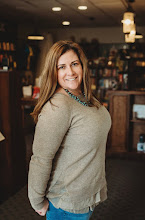The plan
was not to write a blog post this morning. Even as I type this, I’m baking
cupcakes for my son’s party this afternoon, taking a break from picking up our
home, shouting to my boys to read, do their jobs, and clean up before video games, and, and, and. There
is so much to do and a blog post was not in the cards.
Then I read Ben Gilpin’s post. I met Ben briefly at NerdCamp and have followed him on Twitter – and read his blog – for some time. Ben is an amazing administrator. I’m consistently impressed by how he’s leading his building. Today’s post can be found HERE. It focuses on what he took away from NerdCamp, specifically in regard to learning spaces. He ends his posts with these questions:
Then I read Ben Gilpin’s post. I met Ben briefly at NerdCamp and have followed him on Twitter – and read his blog – for some time. Ben is an amazing administrator. I’m consistently impressed by how he’s leading his building. Today’s post can be found HERE. It focuses on what he took away from NerdCamp, specifically in regard to learning spaces. He ends his posts with these questions:
First,
classrooms must be hinged around student learning. Is the space
student-friendly and flexible in meeting the diverse needs of our students?
Second,
classrooms should be interactive, creative and adaptive. Does the space
allow for communication and collaboration?
Finally, is
your learning space teacher-centric or student-centric? Have you ever
asked the students how they feel in the space?
I love
these questions. My classroom has undergone a transformation in the last few
years. Four years ago I got rid of student desks and moved to tables. Two years
ago I got rid of my desk. What I noticed about my room – what made me feel icky
– a few years ago was just that, it was my room. I had to make some
decisions. Now I try and make sure it is our room. I knew I was succeeding
when Brenda Power came to visit for a day in May about a year ago. She
commented on my phone – how it was always with me to Google, confer, etc., but
also how I readily handed it to a student when they needed a device.
Absolutely, what is mine is theirs. Simple.
Here are
some guiding beliefs I have when looking at our classroom:
· As I mentioned, it is not my room,
but ours.
· There is no student space/ teacher
space. It is all our space.
· We need to all be in a comfortable
environment that works for us.
· Our space needs to be flexibly.
· Our space needs to be relaxing.
· If something isn’t working, any
member of the class (including me) can bring that up for problem solving.
Students
are just as likely to bring up noise level, crowding, or something they don’t
think is working as I am. I’m good with moving the room around on a whim,
finding a better flow. In my ideal world, I would not have a spot at a table
for every kid. Right now I do. I’d prefer there were tables if you needed, but
floor space, standing tables, etc. as well. In my dream world I would have the
furniture that makes it much more conducive to moving the classroom around, but
I don’t have a silent backer funding my classroom (beyond my husband funding my
library – and he’s not so silent.)
My
classroom is not going to be found on a style blog for amazing decorations. I’d
rather spend money on books. Beyond painting the bulletin boards all a quiet
mint color because I thought it was calming, I don’t spend money on decorations
for my classroom. I accept donated furniture, found tables in our building no
one is using, and keep the clutter at bay. I love the space we’re in, but have
dreams of what it could be in the future as well. I’m constantly thinking of
different arrangements and how I could make more space for the kids, not less.
How about you? What are your big thoughts on classroom arrangements? Are you trying anything new out this year? I’d love to hear from all of you. I know I was inspired just reading over Gretchen and Franki’s presentation from NerdCamp (HERE). Idea paint? Might need to try that!


















